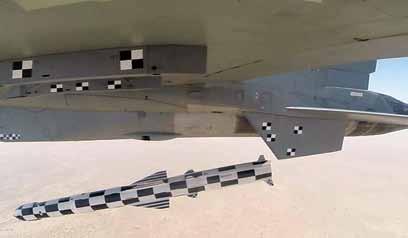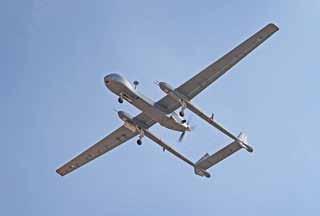Aero India 2021
SPECIAL FEATURE
(left) Dr Vivek Lall with US President Joe Biden; (Middle) C-17 Globemaster (right) CH-47F(I) Chinook
Growing Indo-US Defence and Aerospace Cooperation Has Fortified Relations In June 2016, the US elevated India to a ‘Major Defence Partner’, a status no other country holds Vivek Lall
www.spguidepublications.com
I
ndia-US ties have strengthened since the turn of the century, and the two countries have established a “strategic partnership.” This relationship embraces every field of human endeavor, including defence, space, counterterrorism, non-proliferation, cyber security, energy, trade, healthcare, as well as education and women’s empowerment. During Prime Minister Modi and President Obama’s meeting in Washington, D.C. in June 2016, the US elevated India to a ‘Major Defence Partner’, a status no other country holds. The designation, which became law in August 2018 after it was approved by the US Congress, enables India to enjoy some of the benefits of being a US treaty ally, such as access to defence technology, though the alliance is not a formal one. Since then we have witnessed a lot of emphasis on defence and security ties and trade. The US National Security Strategy of 2017 welcomed India’s emergence as a leading power and a stronger strategic and defence partner, inspiring the leaders in February 2020 to declare this a comprehensive global strategic partnership. This period is also marked by the emergence of the Indo-Pacific as an overarching strategic definition for geopolitics in the region. The Indo-Pacific region encompasses the world’s largest and fastest growing economies and the most populous nations. More than 50 per cent of international trade passes through its waters. From the US perspective, one of the top defence priorities of the US government is implementing the National Defense Strategy in an era of great power competition and focusing the Departments of State and Defence on the priority theater – the Indo-Pacific. One of the main pillars of the US’s Indo-Pacific strategy is strengthening partnerships and this is where India becomes a critical ally. Both the US and India have adapted their internal institutions to this regional orientation: in 2018 the US Department of Defence renamed its Hawaii-based United States Pacific Command as the Indo-Pacific Command. That same year India’s Ministry of External Affairs established a new Indo-Pacific Division. The bilateral naval Malabar Exercise that commenced in 1992 was joined by Japan in 2015. In a significant development, Australia participated for the first time since 2007 in the Malabar exercise, pointing to growing convergence on the Indo-Pacific region and formally establishing the “QUAD”. India and the US continue to enhance the joint military exercises. These included the first-ever tri-services amphibious military exercise known as Tiger Triumph in 2019, which will now be an annual exercise. As a result of these defence agreements and military exercises, forces of the two countries are working more effectively together to keep the Indo-Pacific free and open. Increased interoperability between the military services of India and US has also been achieved through growing exchanges, joint trainings and postings of liaison officers. In 2020, the US for the first time posted a naval officer to an Indian military facility – the newly established Indian Ocean Information Fusion Center in Gurugram. Similarly, India posted for the first time a naval officer to the US Naval Forces Central Command (NAVCENT) in Bahrain. India and the US have recently made significant strategic gains in their bilateral ties. The 2+2 dialogue has formulated a new template for a deeper defence and security partnership between the two nations. In the latest 2+2 held in October 2020, the last of the “foundational agreements” were signed – The Basic Exchange and Cooperation Agreement (BECA) allows for the sharing of sensitive geospatial data for deeper military cooperation. The other pacts are the Logistics Exchange Memorandum of Agreement (LEMOA) signed in August 2016 and the Communications Compatibility and Security Agreement (COMCASA) signed in September 2018. The bilateral relationship is also characterised by an expansion of defence
industrial cooperation. The US government and defence industry have increased joint research, production and defence sales with India and made available some of the most sensitive US military equipment. In 2018, the US granted the Strategic Trade Authorisation Tier 1 status, commonly referred to as STA1. India now enjoys a status normally limited to US’s closest allies, which enables India to access many of highly regulated technology items. The upward trajectory of the India-US strategic partnership has bipartisan backing. The fundamental precepts of this relationship and the convergence on strategic issues is expected to strongly continue at strategic levels in both government and industry this century. The author is on the Global Board of Directors, US-India Business Council
SP’s
4 | Day 1 | FeBRUARy 3, 2021
show
news
WWW.SPsshownews.COM








